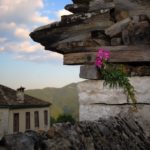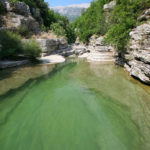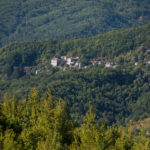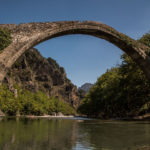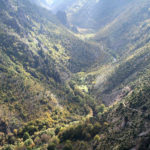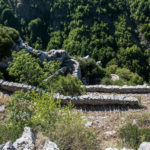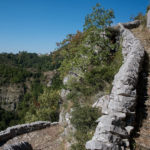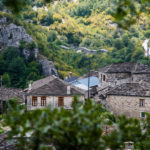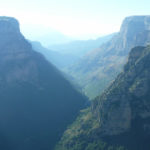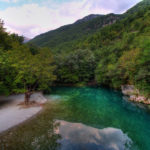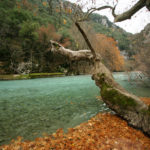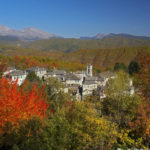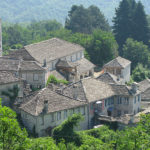![]()
Zagori
“Zagori” stems from the slavic “Za-gora” that means “the place behind the mountains”.
Zagori is a region with many special natural, historical, social and cultural characteristics, situated in the heart of the mountain range of Pindos.
The dense forests in the Eastern Zagori; the deep rocky ravines in Central Zagori; the rich flora and faun; and the picturesque villages built on an altitude between 600 – 1.400 m make Zagori a place of unique beauty.
Timfeoi, Pororeoi and Talares, who were the first habitants of the area, moved there around the 4th century BC.
In the 14th century, the distribution of populations (Arvanites, Sarakatsanoi, Vlachoi) resulted in the formation of the first settlements in the area, just before the continent’s conquest by Ottomen.
According to the local historian I. Lampridis, in 1678 Zagori included 60 villages whereas in the middle of 19th century it contained 46 villages with 27.000 permanent residents.
The tight economic relations with countries of the northern Balkan (Serbia – Blachia) and the special policy treatment from Ottomen – each village had its autonomy- led to an economic and cultural blooming during the 18th and 19th century.
Most of the mansions-houses, the schools, the streets, the bridges, which exist up to now, were built and constructed during the above-mentioned period.
In the eve of the 20th century, the migration took mass character, resulting in a progressive demographic and economic decline.
Today Zagori includes 46 communities organized in 4 municipalities with a total of 3.000 permanent residents.
Dilofo, former Sopotseli (which means “place with plenty of water”), is a settlement that was created, in its current form, in the dues of 18th century (consisted of 5 “machalades” during the 15th century, which were moved with the passage of years in the current place).
It is situated in the heart of Zagori, i.e. in Central Zagori, among Monodentri, Kipous and Koukouli, offering the visitor the chance to explore the entire region of Zagori.
Dilofo, which has been characterized as “preservable”, is the unique village in which the car circulation is not allowed. There, you can see many natural and human pieces of art made of stone and walk on the paved roads, real masterpieces.
Moreover, the old, traditional, stone-built mansions are impressive because of their Zagorian architecture.
The paved roads carry recollections and memories from the past and they silently accept the visitors that walk around them. Sometimes you may also hear the rhythmical sound made by the petals of the charged mules.
Dilofo is built on an altitude of 860 m. on two hills, with relatively small bents. It has been developed around the Central Square (Mesochori), which is the beginning of the three basic paved roads (kalnterimia) that lead to the three main districts, “ano machalas”, “kato machalas” and “pera machalas”.
In Dilofo, there are one hundred mansions (of which only ten have permanent habitants). Apart from the church of the Assumption of Virgin Mary (built in 1850), there are also many smaller chapels and monasteries such as the monastery of Virgin Mary, Savior, Saint Taksiarches, Saint Paraskevi etc.
In Mesochori you can find the Anagnostopoyleios School (Arrenagogeio – Municipal School) and above the church there used to be the Parthenagogeio. The paved roads are stone-built and are set by the stoned-built walls that are purposely high in order to hide the courtyards of the houses from the passer-by’s eye.







